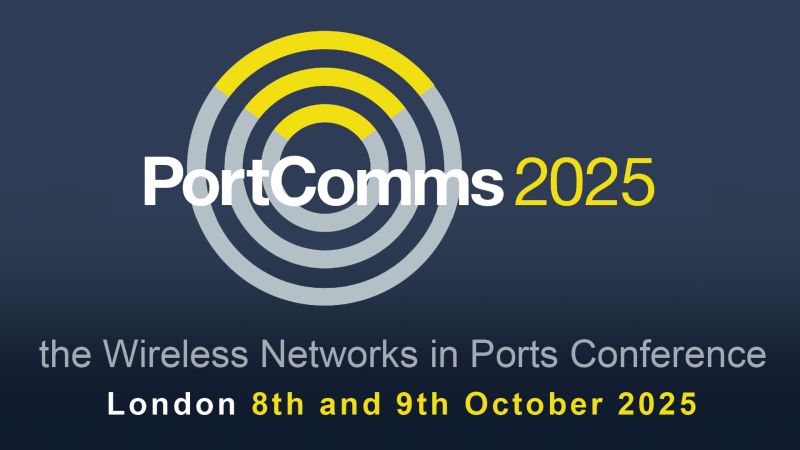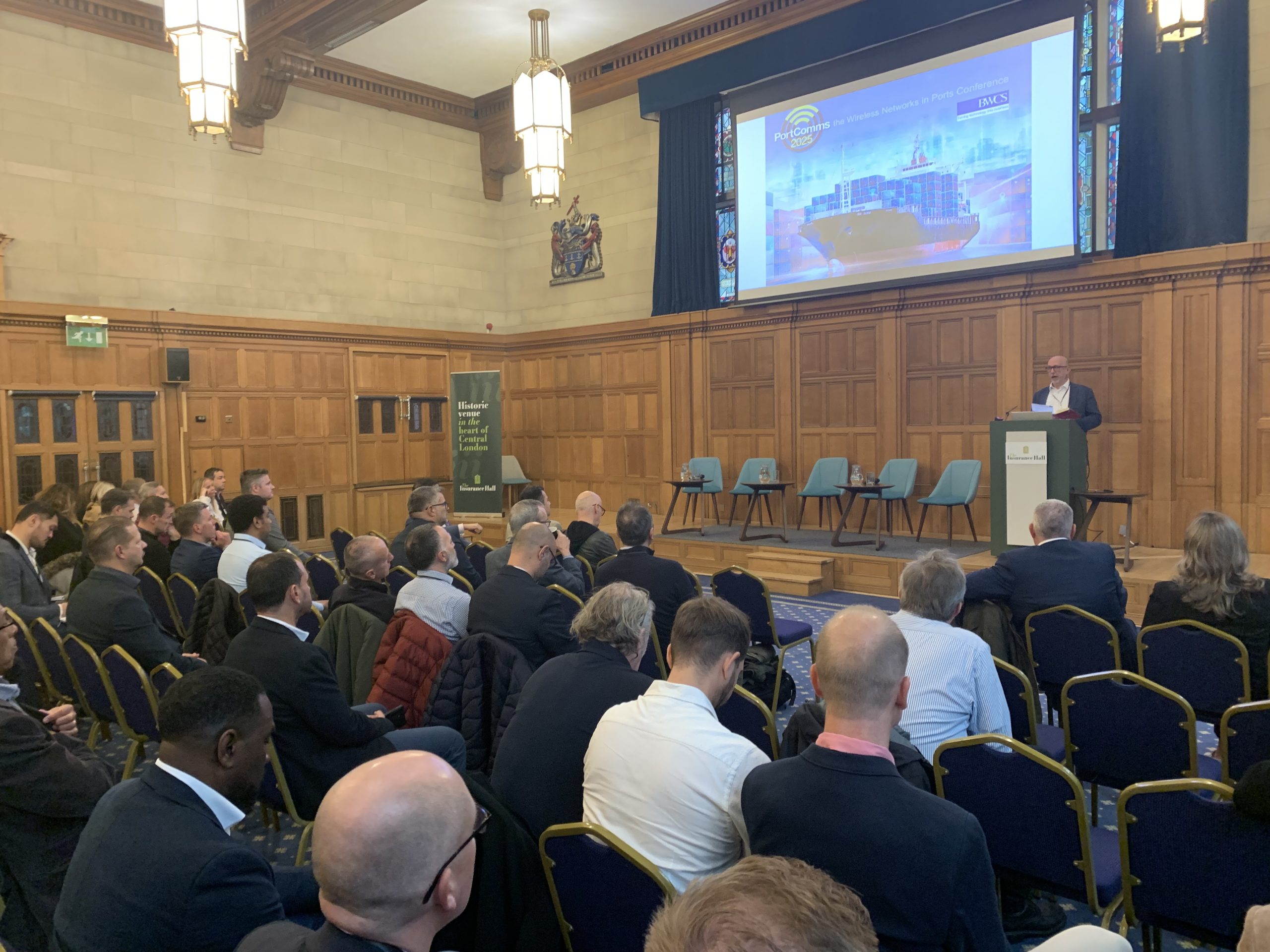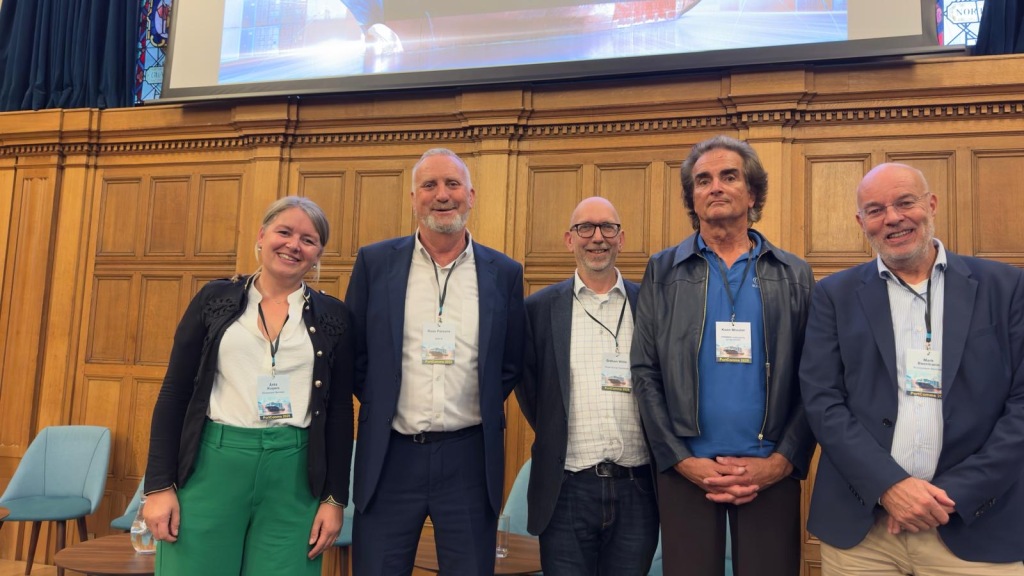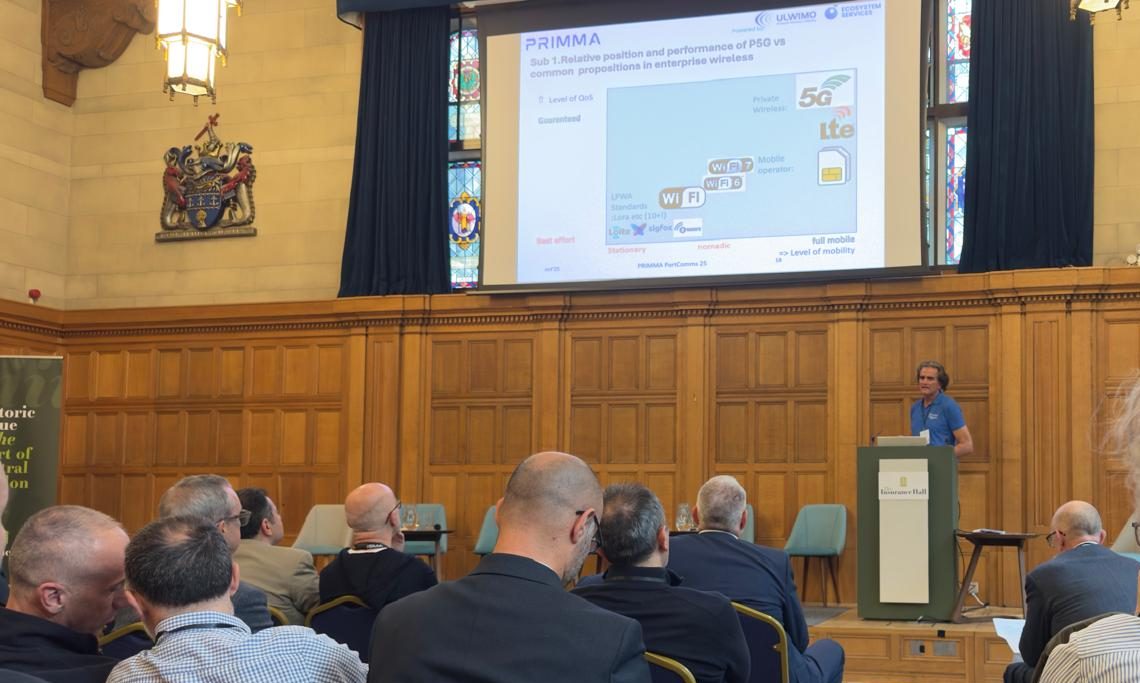PortComms London 2025: Where the Future of Wireless Ports Comes Alive
A report from PRIMMA’s participation at the world’s most focused event on wireless communication in ports
As every October, this October saw again the very specialised and highly valued event ‘PortComms’; subtitled ‘wireless communication in ports’.
This event is extremely specific in that it addresses 1 designated vertical (:ports) and highlights 1 very specialist topic: wireless networks and wireless automation. Thus, the event attracts a selected crowd of around 100 participants, all from the niche of wireless in ports. For PRIMMA this is very much the ‘place to be’; it is here that we are part of the ports eco systems, experience the latest developments and meet the relevant ports and the wireless specialists from within these ports. This is the most concise and specialised event for the vertical !
PRIMMA’s Koen Mioulet has been attending these conferences for the last 4 years and has presented the – formerly ‘mainports’ now ‘PRIMMA’ – programme there on all these occasions. This years’ event he presented some market statistics on the progress of private 5G and the latest outline of the PRIMMA programme with some first results from the two workshops already held:

Koen Mioulet presents the PRIMMA programme in the plenary session
Since the PRIMMA programme went live, we attended this year’s PortComms with the whole PRIMMA team (see below).
This report highlights some overriding trends, a more detailed report is available upon request for programme participants.
Why Wireless and Why Now?
There are multiple driving forces behind wireless and automation in ports, many of them shared by multiple presenters at the congress:
- The pressure on margins and the need to streamline processes
- The aging of the workforce and the lesser inclination of candidate employees to work in ports or on the terrain, leading to labour scarcity
- Workers’ safety; after all the quai can be a harsh work environment. If one can take labour to a safer place like a control room, even better
- IoT and data collection. With telemetry and sensors port operators can now make data available that they didn’t have access to before, enabling smoother operations.
- Crane and AGV control. Most ports are looking at automating the crane, straddle carrier, RGT carrier and AGV operations by remote control. More efficient, less cumbersome for operators and in most cases faster and more reliable.
These are some of the compelling reasons that most presenters agreed on.
Private 5G Takes the Lead
There are off course multiple alternatives for wireless automation of processes. Top of the line is private 4/5G with unrivalled KPI’s, but there is also
- Wi-Fi in its various releases ( wifi 6, wifi 7 and now wifi 8)
- LPWA standards such as LoRa, Sigfox and many others
- Mobile networks and – subscriptions from mobile operators
- Satellite has entered the domain as well with D2D (direct to device) now encompassed in 3GPP releases.
The most common addressed alternative for p5G is Wi-Fi, also widely deployed in ports; however the consensus amongst all speakers was that it doesn’t match the ever more demanding operational requirements of an automated port.
Thus, almost all presenters were displaying how their port automation was progressing and how private 5G was acting as the connectivity layer for these comprehensive innovations.
There is a report available on all the individual ports and their wireless developments; however that report is reserved for PRIMMA programme participants. For this summary we display some observations at an aggregated level
In his presentations, he uses a model that plots mobility against connection reliability. “Wi-Fi sits in the bottom left: limited mobility and no guarantees. Mobile networks from national providers do offer mobility, but no SLAs. The large providers we all know do not offer uptime guarantees. Private networks combine both: full mobility and guaranteed availability. If properly configured, you can even achieve ‘five nines’ [99.999 percent] availability.”
That level of certainty is relevant to a wide range of applications—from voice communication to real-time data from pumps, valves, trucks, and robotics. “Some processes don’t need extremely high availability, like a temperature reading repeated every minute. But for a crane, an emergency button, or an automated guided vehicle, failure is not acceptable.”

Shared Networks and Smart Governance
There were multiple presentation on cases where the demands of multiple port terminals or sites has been combined into one comprehensive project. We mention two.
- Thames Freeport
The Thames estuary in the UK has a port authority for the freeport. In its geography there are multiple prospect users of private 5G: the Ford factory at Dagenham’s, the port of Tilbury and the 2 containers terminals in DPworld. The port authority embarked on a private 5G network that all can use and share for their own operations. The network has been contraced by Verizon and employs Ofcom (UK) private spectrum in 3.8-4.2 Ghz. Thames Freeport is a bright example of how port tenants can benefit from a shared network engaged by the port authority.
- HaRoPa ports conglomerate
Along the river Seine in France there are the seaports of le Havre and Rouen and the inland port of Paris. All 3 have joined forces in an initiative called HaRoPa ( the 1st two letters of their city names). Haropa port is a comprehensive port eco system all along the Seine and it deploys a shared private 4G network in 2.6 Ghz. As this spectrum band has its peculiarities imposed by the French regulator, Haropa contracted 40 Mhz of spectrum under 1 joint licence to be used along the entire Seine by all 3 ports. To achieve this, some intricate governance had to be applied between the various municipalities and port authorities; making Haropa a lighthouse case for governance.
"IF THE PORT AUTHORITY DOESN’T ACT, COMPANIES WILL HAVE TO DO IT THEMSELVES"
A Glimpse of the Future: Autonomous Ships
There is a global development towards more automation of ships and – eventually – fully automated vessels. This MASS programme of the IMO – International Maritime Organisation – is being piloted and engineered in Livorno, Italy. For this the port deploys a private network from Ericsson and collaborates with universities in a dedicated institute (CNIT). Every year art PortComms the progress is presented. The ultimate aim is an autonomous ship with a captain on the shore; to get there intermediate steps such as AI assisted bridge are developed. Through the MASS programme a global standard should be attained. In this development, uninterrupted wireless is essential, ie private 5G in a port and satellite at sea.
“WE WANT TO ACCELERATE THE MARKET, NOT JUST FOR THE FRONT-RUNNERS, BUT FOR THE ENTIRE INDUSTRIAL ECOSYSTEM”
Ports on the Move
Then there were many ports presenting their individual deployments of private cellular. We pick a few here; the full report has more details. For neutrality’s sake the sequence is alphabetical.
- Antwerp port has not yet embarked on a private wireless solutions, instead it relies on the connectivity of multiple MNO’s through a multi SIM router plus on LoRa for its ports vessels and devices.
- Belfast port has automated its operations with a p5G network; in their case a deployment by operator BT yet on private spectrum.
- Riga port or Baltic port has developed …….
- Hamburg port has already had a Tmobile slicing pilot many years ago and has now embarked on a p5G network for one of its container terminals. Once completed and successful; three more such terminals will be automated .
- Felixstowe container terminal has deployed a private 5G network in the container terminals of Hutchison (not the port authority).Once completed and successful Hutchison will expand this network to its – smaller – assets in Harwich and the Thames ports.
- Liverpool port has embarked on a p5G project. Being part of the ‘Peel ports’ conglomerate, the project is likely to scale to other deployments.
- Valencia port has embarked on a very comprehensive pilot with both public and private network coverage for its entire prot. The port comprises container terminals, dry and wet bulk, passenger cruise ships, petrochemical industries and is the 4th port in Europe (after Rotterdam, Antwerp and Hamburg). For its project the port ascertained EU funding and established a separate development entity ‘fundacion Valencia port’. We PRIMMA think it is a prime example for other ports.
PM: Many more presented their wireless projects at previous PortComms editions. Reports on these are available within PRIMMA for the participants in the programm.
PRIMMA at PortComms
Below the PRIMMA crew that attended PortComms 2025: Mark Beermann, Anke Kuipers and presenter Koen Mioulet; accompanied by the organisers Ross Parsons for BWCS and moderator Graham Wilde from Three solutions.

Anke Kuipers, Ross Parsons, Graham Wilde, Koen Mioulet and Mark Beermann
PRIMMA’s Role and Why It Matters
PRIMMA’s presence at PortComms 2025, with domain expert Koen Mioulet presenting and the team, Mark Beermann and Anke Kuipers, on site, reinforced our mission:
to connect the dots between ports, suppliers, integrators, and regulators working toward smarter, safer, and more efficient port operations.
By joining PRIMMA, participants gain:
- Early insight into emerging port projects
- Access to shared knowledge and best practices
- A platform to cooperate across borders and disciplines
- Visibility in the fastest-growing wireless vertical of all
The Bottom Line
PortComms 2025 proved one thing beyond doubt: Private 5G is no longer an experiment — it’s becoming the backbone of the modern port.
For anyone involved in port operations, connectivity, or automation, PRIMMA offers a front-row seat to this transformation, and a community to shape what comes next.

